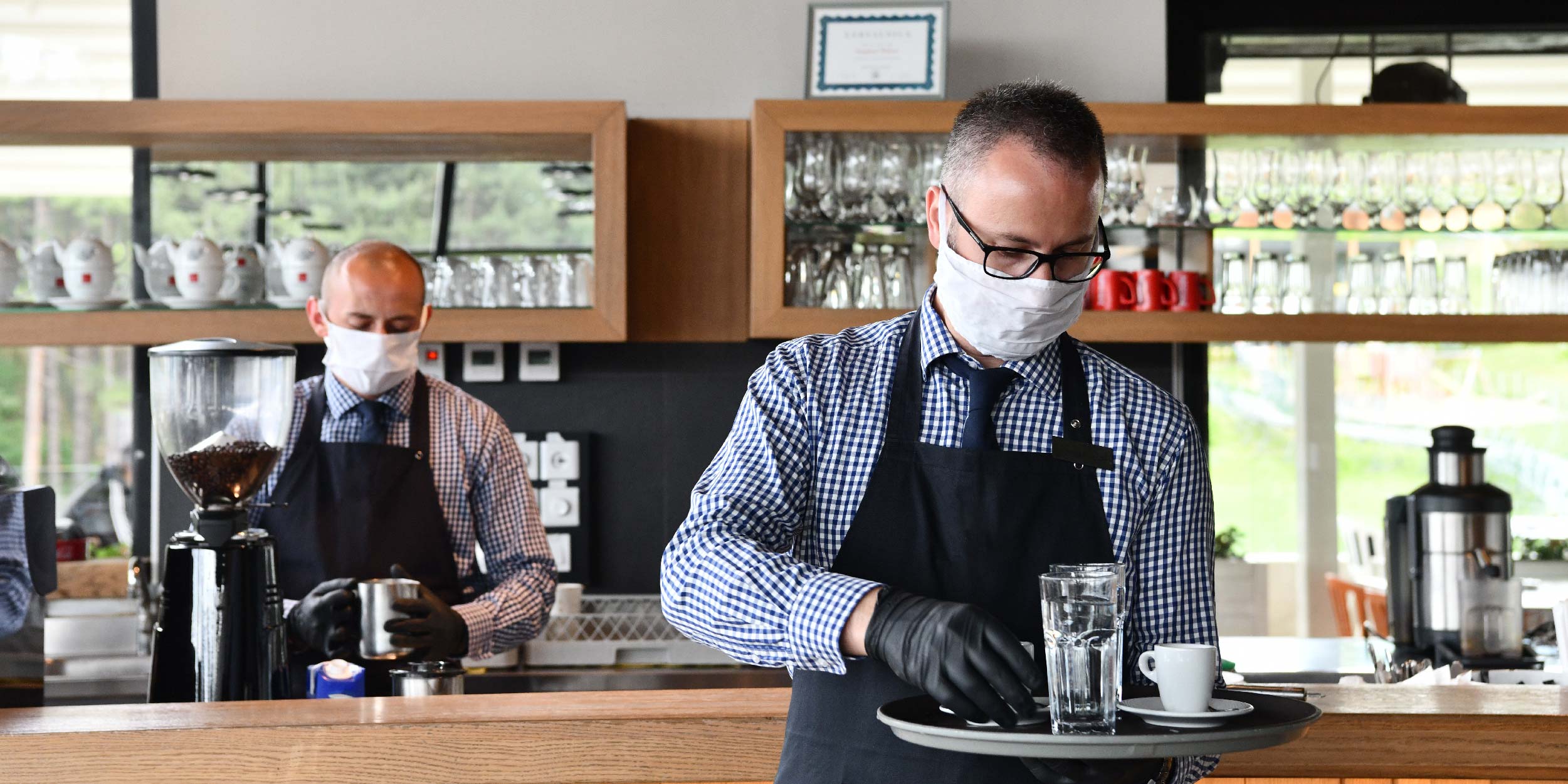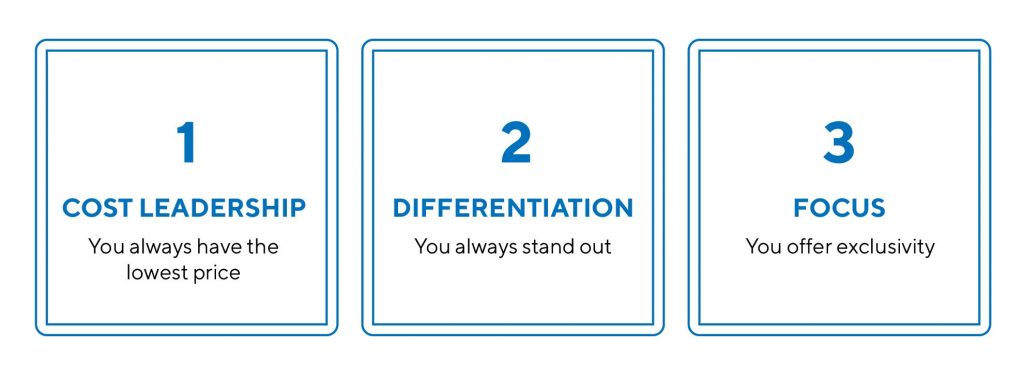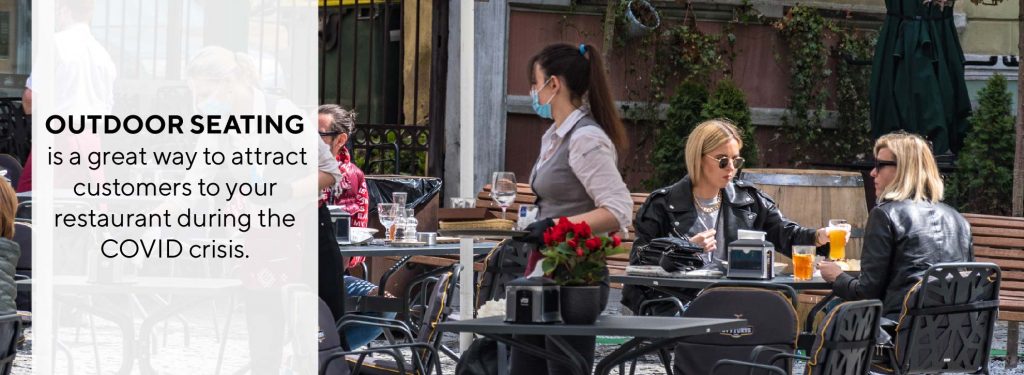
How to Outshine Your Competitors During COVID15 min read
Often, outshining the competition comes down to effort. It’s the little extra steps you take each day—the sweat equity that you’re willing to put in that your competitors aren’t—that makes all the difference. That’s how you create and hone an edge. In this post, we’ll give you several ways you can pull ahead of the competition as businesses reopen.
You’ll learn how to refine your competitive advantage, how to add value, how to better understand your customers and much more.
But first, we’ll take a quick peek into the COVID-19 situation for insights into how it might impact our industry.
In the News…
President Donald Trump has said on record that there will be a second stimulus package. But note that ‘package’ does not necessarily mean ‘stimulus check.’ Indeed, the administration seemed evasive when asked how much a second stimulus check would be. If there is to be a second check, it’s likely to be for the same amount as before. Some of this would, of course, directly benefit the hard hit restaurant industry.
In other news, the Federal Reserve’s Main Street Lending Program is getting underway. The program is an alternative to the SBA Paycheck Protection Program and aims to target medium-sized businesses. Note that while these loans offer low interest rates, they’re not forgivable.
In an effort to help as many businesses qualify as possible, the program has lowered the minimum loan from $500,000 to $250,000. Additionally, the term for each loan has been increased from four years to five.
Now, let’s turn our attention to how you can pull ahead of the competition as you reopen.
Focus on Your Competitive Advantage
First, let’s review the standard competitive strategies, of which there are three. Chances are that your restaurant already fits into one of them. The question is, would your establishment be better served by pursuing one of the others? Let’s take a look.
#1 Cost Leadership
The cost leadership strategy involves offering the best price. Generally, you want to match or go lower than your competitor’s prices. In this way, you offer more value to customers. You’re relying on price-conscious customers to give you volume. Of course, some types of restaurant are unable to compete much on price, such as fine dining establishments. Still, if for some reason you’re able to provide the same quality food at a lower price, then you may want to consider this model. Especially amid concerns that we may be sliding into an economic depression.
#2 Differentiation
In the differentiation setup, you set yourself apart from your closest competitors by being different. You offer something novel, whether that’s a different type of food or a unique experience. Often, the differentiation strategy allows you to charge higher prices than you could otherwise.
#3 Focus
Focus is similar to differentiation, but it takes things a step further. In a focus setup, you cater to a niche audience. Let’s imagine two seafood restaurants. The first sets itself apart with its killer fried catfish. They’re differentiating themselves from other seafood joints in the area by specializing in one type of dish.
But let’s say the second restaurant sells only exotic seafood dishes like sea snail, puffer fish and live octopus.
The second restaurant is a focus operation. They can charge even more than the restaurant using differentiation. Why? Because the customers they do attract will pay a premium for the unique experience.
Which model are you using? Might it be time to try something new?

As the COVID situation progresses and you think about reopening, it’s a good time to consider your competitive advantage. What makes you special? What makes you a standout operation? Without a clear cut answer to this question, you’ll find it hard to differentiate yourself from other offerings.
The bottom line is that, especially now, if you have no competitive advantage, you won’t be able to earn enough income to stay open. A simple way to think of competitive advantage is this: what is the main reason your customers choose you over your competitors?
For some restaurants, this is easy. For instance, if you cater to vegans, your main competitive advantage is that you offer a menu that appeals to people who avoid animal foods.
On the other hand, mounting evidence suggests that saturated fat is not harmful after all. So in the coming years, we might see restaurants opening up that offer ‘old fashioned’ fatty foods, like fries prepared in beef tallow and huge burgers.
Both of the above examples are niche. They either rely on differentiation or focus, explained above. Their main competitive advantage is that their menu is focused on a particular type of food that appeals to a specific type of consumer. But many niche operations get into trouble by resting on their laurels. It’s not enough to be niche. Especially now, you need to scope out your existing competition and prepare for newcomers to the market. At the same time, you must maintain focus on your own competitive advantage.
Below are a few ways to hone that advantage. You’ll notice that many of these methods hearken back to the three types of competitive strategies.
#1 Added Value
Added value is the extra mile. It’s that extra something that makes customers feel appreciated or catered to. For instance, our high fat eatery could offer endless French fries cooked in beef tallow and covered in sour cream or butter. This would be a sensible loss leader because few people would eat more than two servings in a single sitting. Fat is quite satiating.
The vegan establishment could leverage the fact that their target customers tend to be environmentally conscious. They could, for instance, encourage customers to bring in their own steel straws. This way, folks won’t be relying on the restaurant to provide plastic straws. This reduces strain on the enlivenment. The request would be in alignment with the values of the target customer, and so it qualifies as added value.
Look at your competitors as you reopen. What can you offer your customers that they don’t?
#2 Intellectual Property

Another way to gain a competitive advantage is by creating a unique brand. This involves creating assets that you own—intellectual property. Together these assets make up the essence of your operation. Your brand is what makes you unique. This includes your logo, name, website and any other brand assets. Of course, this also includes any patents or trademarks you use in your operation.
In what ways can you stand out from your competition? Do your closest competitors have blogs? If they don’t, you should start one. If you already have a blog, what makes it unique?
In your day to day, do you have a process that makes you more efficient than your competitors? Is it patentable? If it makes you more efficient, you need to be able to tell customers about it.
One of the things that set McDonald’s apart from its early competitors was its Speedee Service System.
#3 Location
Does your location allow you to offer outdoor seating? Or can you offer seating in your parking lot? That could be an advantage right now. If you’re in a central location, you can expect business to perk up once a COVID-19 vaccine is announced.
If you suspect that your restaurant may be suffering from the so-called location curse, now might be a chance to break free. The location curse: some locations, for whatever reason, don’t seem to do well.
Because so many restaurants have come and gone there, customers associate the location with poor food, bad service or high prices. If you think you’re in such a location, recognize that folks are going to be tired of cooking for themselves once COVID resolves. Take advantage of this eagerness to dine out. Do everything you can to overcome the curse, whether that’s offering discounts, double happy hour or some other gimmick.

#4 Uniqueness
Do you have a vision for a truly innovative restaurant? Or have you already created one? This can provide a strong competitive advantage. Provided, of course, that other elements such as value and service fall into line with customer expectations.
To get a feel for truly innovative restaurants, study up on these:
Ithaa.
Located in the Maldives, this is the world’s first and only underwater restaurant
Dinner In The Sky.
Suspended 160 feet in the air, this restaurant can only serve 22 people at a time.
Parallax Restaurant.
At 9,600 feet up, this is one of the highest restaurants in the world. The restaurant overlooks the snow-capped Eastern Sierra mountains.
Signs.
Signs caters to the deaf community. All staff members are fluent in American Sign Language.
It may be unrealistic for you to create a restaurant like these—for now. But the goal is to be on the lookout for ways you can differentiate yourself from the competition. Even if that just means acquiring a sinfully delicious recipe for blueberry muffins.
#5 Teamwork
Sometimes, what sets a restaurant apart is who owns it. A good partnership, one that’s based on synergy and complimentary skill sets, can be an amazing asset. A bad partnership, though, is like a bad marriage. Who are you in bed with, so to speak? If those relationships need work, now is the time to do that work. Clear the air so you can be at peak efficiency once COVID resolves.

Dust Off Your Business Plan
Remember that pesky business plan your financial backer, significant other or father made you write? It’s time to pull that out of its box and it give it a once over. You were brimming with possibility before you opened your doors, so what changed? Well, a pandemic struck. Granted. But let’s not think about we can’t control. Instead, let’s talk about how we can be proactive.
When reviewing your business plan, ask yourself:
- Why did I think customers would want to visit my restaurant? Is that still true today?
- Why do potential customers go to my competitors? Has that changed? Do I have new competition now that I haven’t accounted for?
- When a potential customer looks for dining options in my area, do they find my restaurant online? Why or why not? Have I followed my plan to establish my brand? If not, how can I change course?
- Are the benefits I provide to my customers in line when what I planned to offer them when I wrote my business plan? Have I compromised on quality? If so, how and why?
Reflecting on whether you’ve followed your plan can provide a powerful impetus to get back on track. Now more than ever, it’s important to show your customers that you’re committed to quality and value.
For a good example of a chain that has stuck to its business plan, look no further than McDonald’s. While the brand has seen many changes over the years, they’ve remained true to their original goals of maintaining:
- Low operating costs
- Universal taste
- Speed
In what ways have you veered from your business plan? How can you get back on track?
How to Outshine the Competition
The vast majority of consumers don’t know what they‘re going to eat for dinner until a few hours or minutes beforehand. For the brand that’s willing to do some extra legwork, this willingness to dine out spontaneously means more opportunity to gain and retain first time customers. But to do that, you’ll have to beat the competition. Here’s how to do that in three easy steps.
#1 Know Your Customers
Or, more to the point, know your target audience. If you’ve never created customer personas, now is the time to do so. A buyer persona is a behavioral profile based on demographic data. Think of a buyer persona as a report on your ideal customer. Who will come to your restaurant and why?
Think back to that hypothetical vegan restaurant. The owners of this establishment would need very fine-tuned buyer personas. Everything from the seating to the menu will be influenced by their ideal customer. On the other hand, a small, family-style restaurant needs to appeal to a much wider audience. They could probably get by with more generic buyer personas.
Now think of two things:
- The type of restaurant you own
- Your closest competitors
How can you fine tune your buyer personas so you can cater to your ideal customer better? And how can you do so better and more consistently than your competitors do it? You want at least three customer personas. Each persona should target a different type of regular.
The buyer persona gives you access to one main advantage. It helps you demonstrate to your customers that you understand them. For instance, imagine a family-friendly restaurant that doesn’t provide high chairs and changing tables. They would be seen as pretty out of touch, right? Providing these extras shows your customers that you understand their needs. This leads to repeat business.
Imagine a small restaurant in a big city. This establishment competes on price, and they’re located right by a bus top. How could this restaurant show their customers that they understand their financial struggles? It could lower the cost of certain menu items to coincide with the bus schedule. But to come up with this plan, the owner would need to create some buyer personas first. It’s one of the main ways to understand typical customer pain points.
#2 Consult a Map & Seek Partnerships

Check yourself out on Google Maps. Ask yourself:
- How are my customers reaching my restaurant?
- What other options do they have within walking distance?
- What other attractions or draws are nearby?
Now, do the same analysis for your competitors. If they’re enjoying more foot traffic because of a nearby bus route or better parking, you might have to get creative. You need to offset their advantage any way you can.
Often, it’s possible to establish cross-promotion partnerships with nearby businesses. This may be a great option as businesses reopen. What businesses do you have nearby that aren’t direct competitors? For instance, if you own a fast food franchise, partnering with a gym may not be a good look. But what about a motel?
If you run a higher end establishment, and there’s a hotel nearby, consider hosting guest chef events for the hotel’s customers. The hotel may be happy to partner with you.
If you have digital signage, you may be able to establish partnerships with local businesses to display ads for them. But use this strategy sparingly as guests can find it annoying.
#3 Leverage Your Data for Insights
Too many restaurant owners let their demographic data go to waste. Restaurants that actively analyze their data outperform those that don’t. If you have a modern POS, you’re collecting big data that you should use to fine tune your operation. Big data is made up of:
- The what. This is hard, concrete data like sales, labor, etc.
- The why. This is unstructured data that can give you insights into why certain people choose you over the competition.
You get at the what data by digging into your POS reports. Financial, accountancy, sales, product prices and availability data combined can give you big insights. This is homework you can’t afford to skip.
The why data is, as mentioned, less structured. It comprises customer feedback, surveys, social media and reviews. It also includes demographic data such as emails, names and addresses. You can get this data by offering a loyalty program.
One of the best uses of this data is to determine advertising budget. For instance, if you just look at your monthly sales report, you won’t see the big picture. You should also take into account your online reviews, social media mentions, trends, etc. When you look at this larger data set as a whole, you can create a more accurate advertising budget.
You can also use this information to gauge customer loyalty. A big part of restaurant success is turning one-and-done customers into repeat customers. If you operate a loyalty program, dig into the data you glean from it regularly. If you see a dip in overall business, check to see if you had any new reviews on a site like Yelp! at around the same time. Check your @mentions on social media, too. You may need to do some reputation management. Sometimes, reaching out to a disgruntled customer to make it right is all that’s required.
But if your repeat business—your loyalty program sales—dipped at the same time, that can indicate a bigger issue somewhere.
This data can also help you segment your customer base. Dig into your data to group customers by location, demographic information and purchase patterns. The insights you glean through this process can be invaluable. Overall, you want to determine:
- Which customer segment is largest?
- Which customer segment spends the most money?
- Which customer segment is most profitable?
For instance, a bar may have a large customer segment made up of college students. It’s probably not the most profitable segment, but it provides high volume. The same bar might have a much smaller segment of working professionals. Though that segment is smaller, each customer is worth more. The bar owner would need to look at all the available data before deciding to cater to the smaller group. For instance, if a search of social mentions identifies the bar as a popular hangout for college students, actively catering to a different crowd could be a risky play.
The college students are paying the bills. In this case, the smarter play may be to find a way to appeal to the older adults while not alienating the students.
We hope this post has given you ideas on how you can jump ahead of the competition. If so, could you consider giving us a share? Your fellow restauranpreneurs would appreciate it. Thanks!



